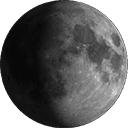NEAR-INFRARED GALAXY COUNTS AND EVOLUTION FROM THE WIDE-FIELD ALHAMBRA SURVEY
Author(s): Cristobal-Hornillos, D.; Aguerri, J. A. L.; Moles, M.; et al.
Source: ASTROPHYSICAL JOURNAL Volume: 696 Issue: 2 Pages: 1554-1575 DOI: 10.1088/0004-637X/696/2/1554 Published: MAY 10 2009
The ALHAMBRA survey aims to cover 4 deg(2) using a system of 20 contiguous, equal width, medium-band filters spanning the range 3500 angstrom-9700 angstrom plus the standard JHKs filters. Here we analyze deep near-IR number counts of one of our fields (ALH08) for which we have a relatively large area (0.5 deg(2)) and faint photometry (J = 22.4, H = 21.3, and K = 20.0 at the 50% of recovery efficiency for point-like sources). We find that the logarithmic gradient of the galaxy counts undergoes a distinct change to a flatter slope in each band: from 0.44 at [17.0, 18.5] to 0.34 at [19.5, 22.0] for the J band; for the H band 0.46 at [15.5, 18.0] to 0.36 at [19.0, 21.0], and in Ks the change is from 0.53 in the range [15.0, 17.0] to 0.33 in the interval [18.0, 20.0]. These observations together with faint optical counts are used to constrain models that include density and luminosity evolution of the local type-dependent luminosity functions. Our models imply a decline in the space density of evolved early-type galaxies with increasing redshift, such that only 30%-50% of the bulk of the present day red ellipticals was already in place at z similar to 1.






